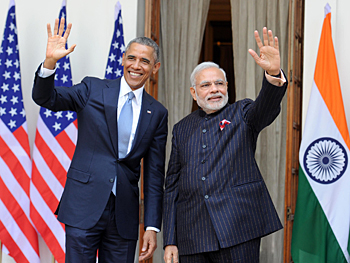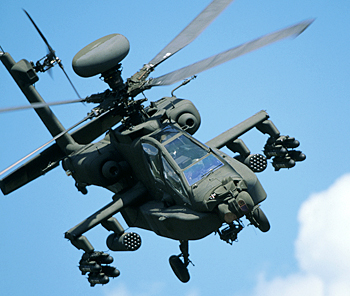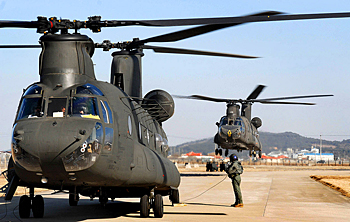INDIAN ARMED FORCES CHIEFS ON
OUR RELENTLESS AND FOCUSED PUBLISHING EFFORTS

SP Guide Publications puts forth a well compiled articulation of issues, pursuits and accomplishments of the Indian Army, over the years

I am confident that SP Guide Publications would continue to inform, inspire and influence.

My compliments to SP Guide Publications for informative and credible reportage on contemporary aerospace issues over the past six decades.
- Prime Minister witnesses 'Bharat Shakti' – a Tri-Services Firing and Manoeuvre Exercise in Pokhran, Rajasthan
- Interim Defence Budget 2024-25 — An Analysis
- Union Defence budget 2024
- Indian Army: In quest of greater firepower and policy recommendations for gaps
- Indian Army Annual Press Conference 2024
- 6G will transform military-industrial applications
Apaches and Chinooks- CCS clears the deal



Before his second crucial US visit and meeting with President Barak Obama in New York on 28th September, Prime Minister Narendra Modi presided over the Cabinet Committee on Security (CCS) meeting on 22nd September, to clear the roughly US$ 3.1 billion deal for two of the world's most capable helicopters of their class, the heavy lift Chinooks and the Apaches Longbow gunships.
This was the first major defence order cleared by the BJP-led NDA government to the US companies. While the deal was cleared by the CCS in New Delhi, the US Secretary of State John Kerry said in Washington while addressing the opening plenary of the Strategic and Commercial dialogue, "We have agreed on a new 10-year defense framework and also on a shared strategic vision for the Asia-Pacific and Indian Ocean that stresses on regional security, maritime law, peaceful resolution of disputes, and economic connectivity across the region. The United States is one of India's largest defense suppliers, and we are partnering to develop and produce advanced defense systems, including through our aircraft carrier working group."
Interestingly, the two governments and Boeing, the US company chose to keep mum over the clearance. The Indian government official only announced the deal unofficially. The proposal to buy the two class of helicopters were cleared almost three years ago after competition between Russian and American companies and was waiting for the green signal from India's top decision making body on defence acquisition. This was the latest big ticket deal the Indian government has handed over to the US companies, which has now crossed over US$ 10 billion in almost a decade. The United States has thus emerged as the principal source of supplier of weapon systems and platforms, though Russia and Israel still continue to be the mainstay of the Indian armed forces. These helicopters will prove to be game changers in case of conflict with the neighboring countries as they can operate with ease in various terrains.
Ever since the Ministry of Defence had cleared the acquisition of the two class of American helicopters, the Army Headquarters had raised claim to these two in view of their new found roles in future conflict. Since the Helicopters have been ordered for the IAF, the Indian Army has also placed demand for these helicopters from the MoD. According to Army sources, the Army Headquarters has raised the demand for 39 Apaches to deploy them in combat zone for close support. The Indian Army's aviation wing has, of late, been clamoring for improving its fire power to make them more relevant in the future war scenario.
Till now IAF had possessed the Russian Mi-35 attack helicopters and are now on the verge of retirement. The Apaches have been described as pure attack helicopter, where as the Mi-35s are attack helicopters but were originally designed to carry combat soldiers in the war zone. The Apaches flown by two pilots are dedicated attack choppers. The Apaches have been described as the most lethal attack helicopters in the world and has been in service with the US forces since 1984. More than 2,000 such helicopters have been supplied to US and NATO armed forces. The TypeH-64EApache that India will be getting will be the latest Block-III configuration, first inducted in the US armed forces four years ago. The 22 Apaches will cost India around US$ 1.4 billion. According to the military sources the acquisition will not be limited to 22 AH-64 E Apaches and 15 CH-47 F Chinooks. Further orders have been kept as option after their successful induction. Moreover, the Indian Army Aviation wing may also be considered for their induction.
The two helicopter deals have been cleared just on the eve of the India —US Strategic and Commercial talks, held in Washington jointly headed by the Indian External Affairs Minister and the US Secretary of State and the Indian Commerce Minister and the US Secretary of Commerce. The clearance of US$3.1 billion deal has uplifted the mood of US officials who were pushing for the big ticket deals, already accepted by the Indian government. According to an official, the 30 per cent offset clause has been agreed to by the US companies and will have to execute them through India's leading private sector conglomerates like Larsen and Toubro, Mahindra and Mahindra and the Tatas. The official said that the purchase of Apache multi role combat helicopter had two components — a foreign military sales agreement between the two governments for the weapons package and the direct commercial sale deal with Boeing. For Chinooks, the direct commercial deal will be signed between Boeing and the Indian MoD. The agreement will have an option of four more Chinooks and 11 more Apaches. Due to inordinate delay from Indian decision makers, the US company had to keep extending commercial bids on the specific request of the Indian MoD. According to reports, Boeing had warned the Indian MoD to raise the acquisition cost after September 30 by 40 per cent. The sale price was quoted in 2009 and granted India 13 price escalations.
The AH-64 Apaches and the CH-74 F Chinooks had outclassed their Russian competitors Mi-28 Havocs and the Mi-26s. The Indian Air Force already possesses the Mi-26s and the Russians had offered improved version of this heavy lift helicopter. According to sources in the IAF maintenance related issues led the IAF bosses to reject the Mi-26s. Extensive field trials were conducted and the Americans were declared as the winner, but the government waited till 22nd September to give final clearance. The Defence Acquisition Council (DAC) had earlier recommended to the CCS for clearing the deal in August last year. Sources said that the IAF will be able to induct both class of helicopters by 2018-19, if the contract is signed within the next few months.
US companies have earlier supplied to India the P-8-I maritime surveillance aircraft, the C-17 Globemaster—III transport aircraft, the C-130 Super Hercules, the amphibious ship Trenton, weapon locating radars, various air- to- air and air- to- ground missiles etc and now with the latest orders the US has emerged as a major defence supplier.
The India US strategic partnership has enabled Indian armed forces to acquire these ultra-modern weapon systems and platforms to Indian armed forces and much more are already in the pipeline under the rubric of the India-US Defence Trade and Technology Initiative (DTTI). This promises to take India to be joint developer and producer of most modern and lethal weapon systems.





